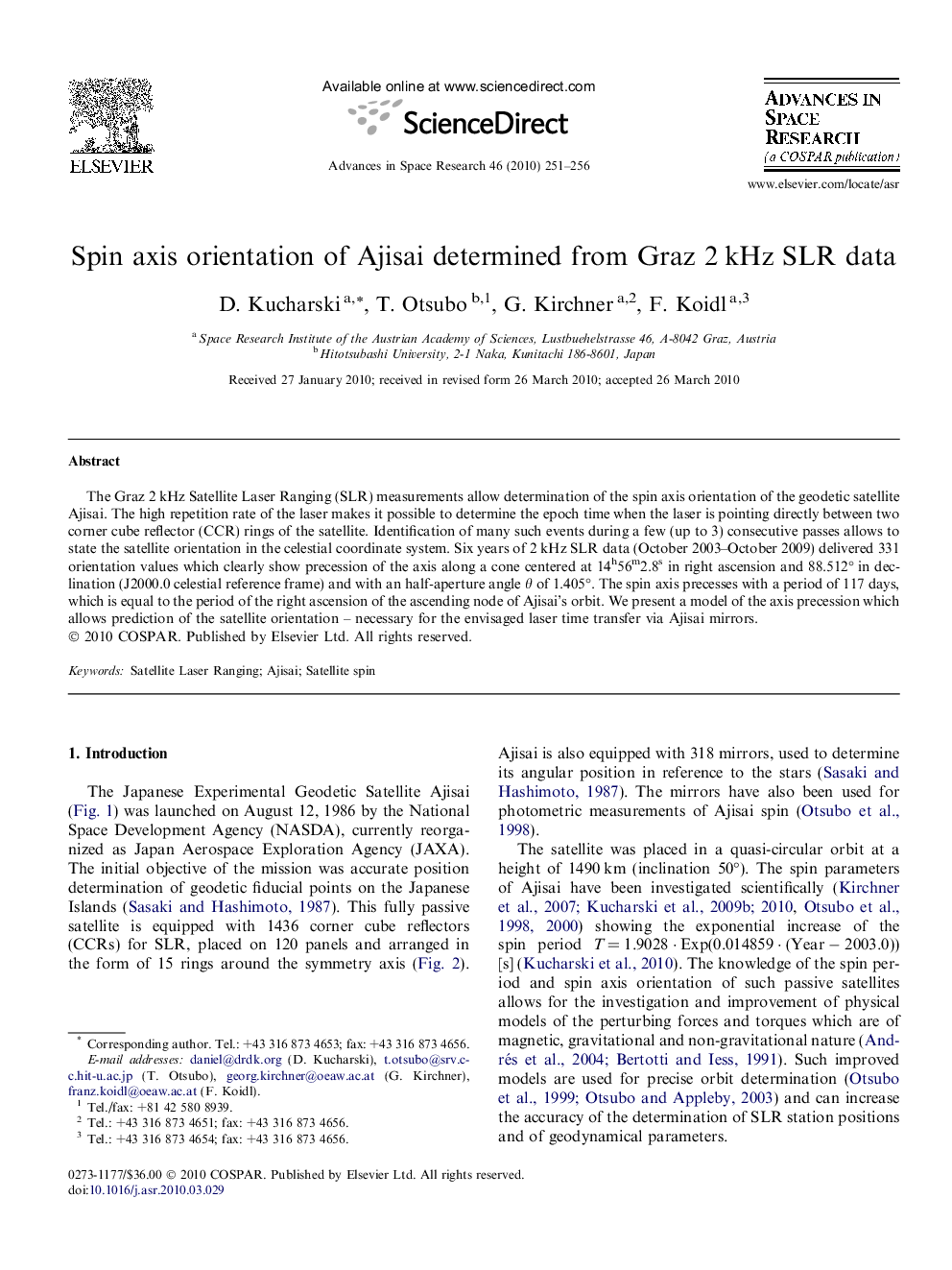| Article ID | Journal | Published Year | Pages | File Type |
|---|---|---|---|---|
| 1765416 | Advances in Space Research | 2010 | 6 Pages |
The Graz 2 kHz Satellite Laser Ranging (SLR) measurements allow determination of the spin axis orientation of the geodetic satellite Ajisai. The high repetition rate of the laser makes it possible to determine the epoch time when the laser is pointing directly between two corner cube reflector (CCR) rings of the satellite. Identification of many such events during a few (up to 3) consecutive passes allows to state the satellite orientation in the celestial coordinate system. Six years of 2 kHz SLR data (October 2003–October 2009) delivered 331 orientation values which clearly show precession of the axis along a cone centered at 14h56m2.8s in right ascension and 88.512° in declination (J2000.0 celestial reference frame) and with an half-aperture angle θ of 1.405°. The spin axis precesses with a period of 117 days, which is equal to the period of the right ascension of the ascending node of Ajisai’s orbit. We present a model of the axis precession which allows prediction of the satellite orientation – necessary for the envisaged laser time transfer via Ajisai mirrors.
